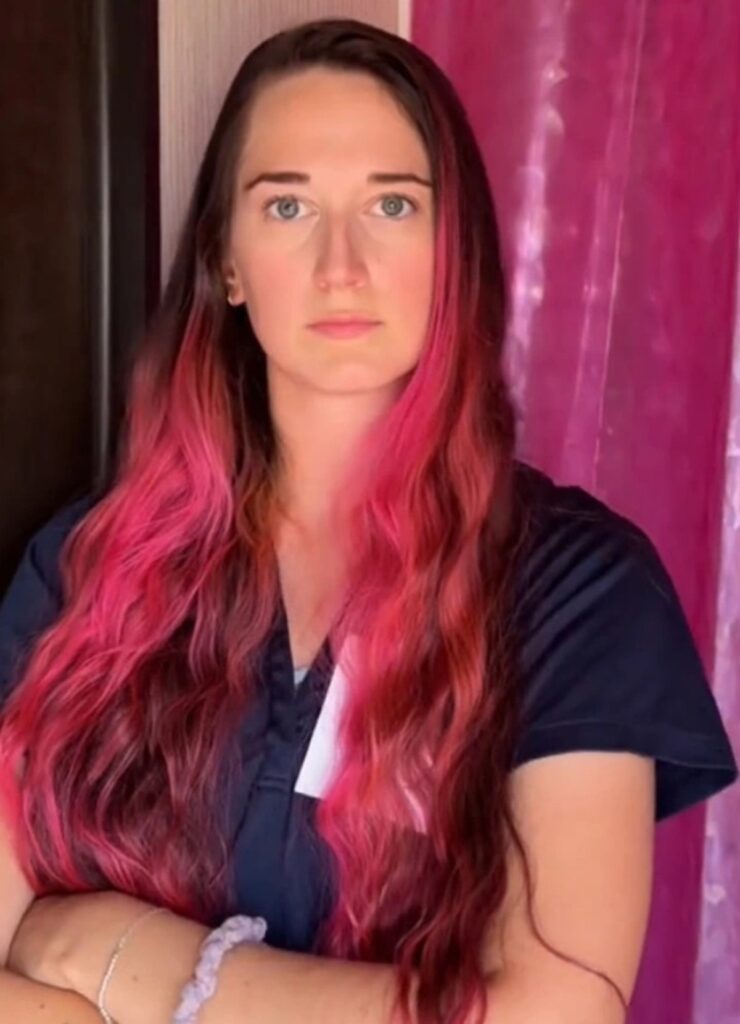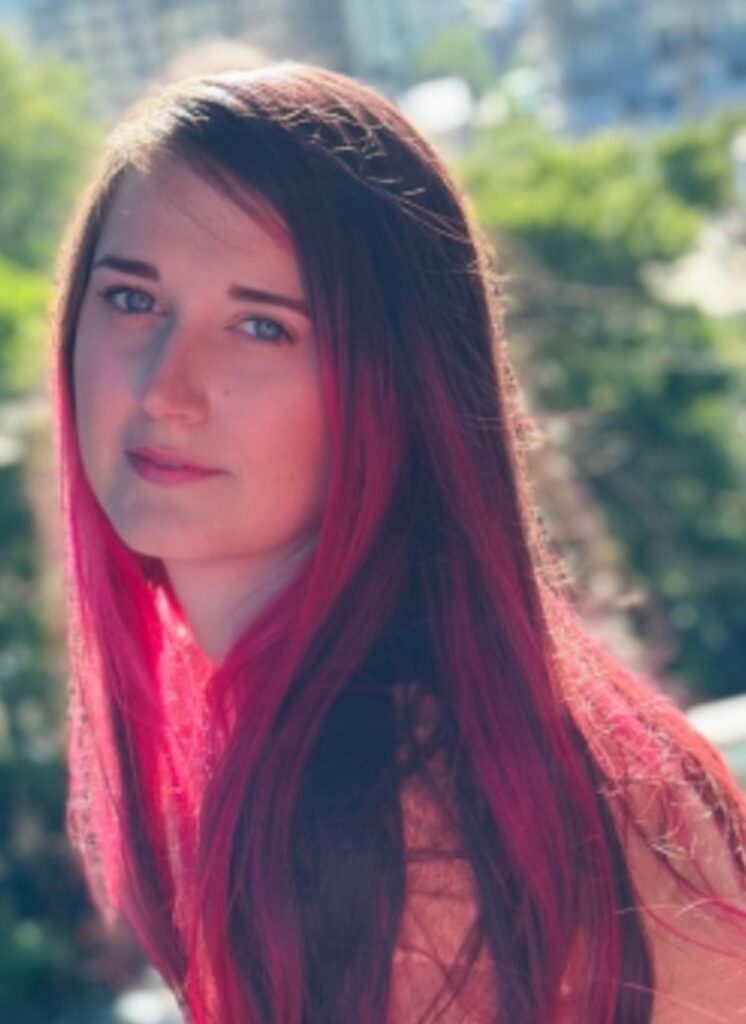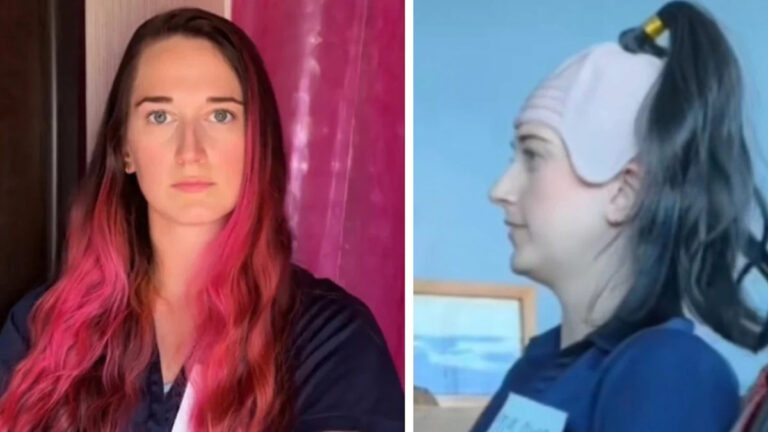Imagine landing a new job only to find out your vibrant pink hair isn’t welcome. That’s exactly what happened to Emily Benschoter, a 29-year-old with a flair for humor and a love for unconventional hair colors. Faced with a strict dress code at her new receptionist position at a hotel, Emily decided if her pink hair had to be covered, she’d do it in style—her style.
A Colorful Dilemma

Emily’s journey started with a remote interview process, during which her future employers never actually saw her bubblegum-pink hair. It was only after she was hired and showed up for work that her manager gave her an ultimatum: hide the pink with a wig or find another job.

A Witty Response
Rather than conforming quietly, Emily took to TikTok to share her unique solution. She began wearing outrageous wigs to work, each more ridiculous than the last. From neon blues and greens to exaggerated beehive styles, Emily turned a restriction into a fashion statement.

Her TikTok quickly went viral, captioned humorously, “When your company doesn’t approve of your pink hair, so you wear terrible wigs.” Her followers loved it. Hundreds applauded her creativity and resilience, with comments pouring in encouraging her to keep up the great work and even offering to buy wigs for her.

More Than Just Laughs
In an interview, Emily shared why she chose this playful form of protest. “The worse the wig, the better,” she said with a chuckle. “It’s a way to start conversations with customers who often end up supporting my side.”
She also explained her decision against dying her hair a more “acceptable” color. “I express myself through my appearance, and I feel great with pink hair. So, I found a way to keep my job and my style.”

However, despite the fun and games, Emily expressed frustration over the situation. “It’s dehumanizing not to be accepted for who I am just because my hair is a non-traditional color. It’s incredibly superficial to let hair color be a barrier,” she lamented.

Emily’s story isn’t just about wigs and workplace policies. It’s about individuality, creativity, and the ongoing debate over professional appearances in modern workplaces. As we continue to navigate these discussions, Emily’s colorful defiance serves as a reminder of the importance of self-expression and the value of accepting others for who they are—not just what they look like.






